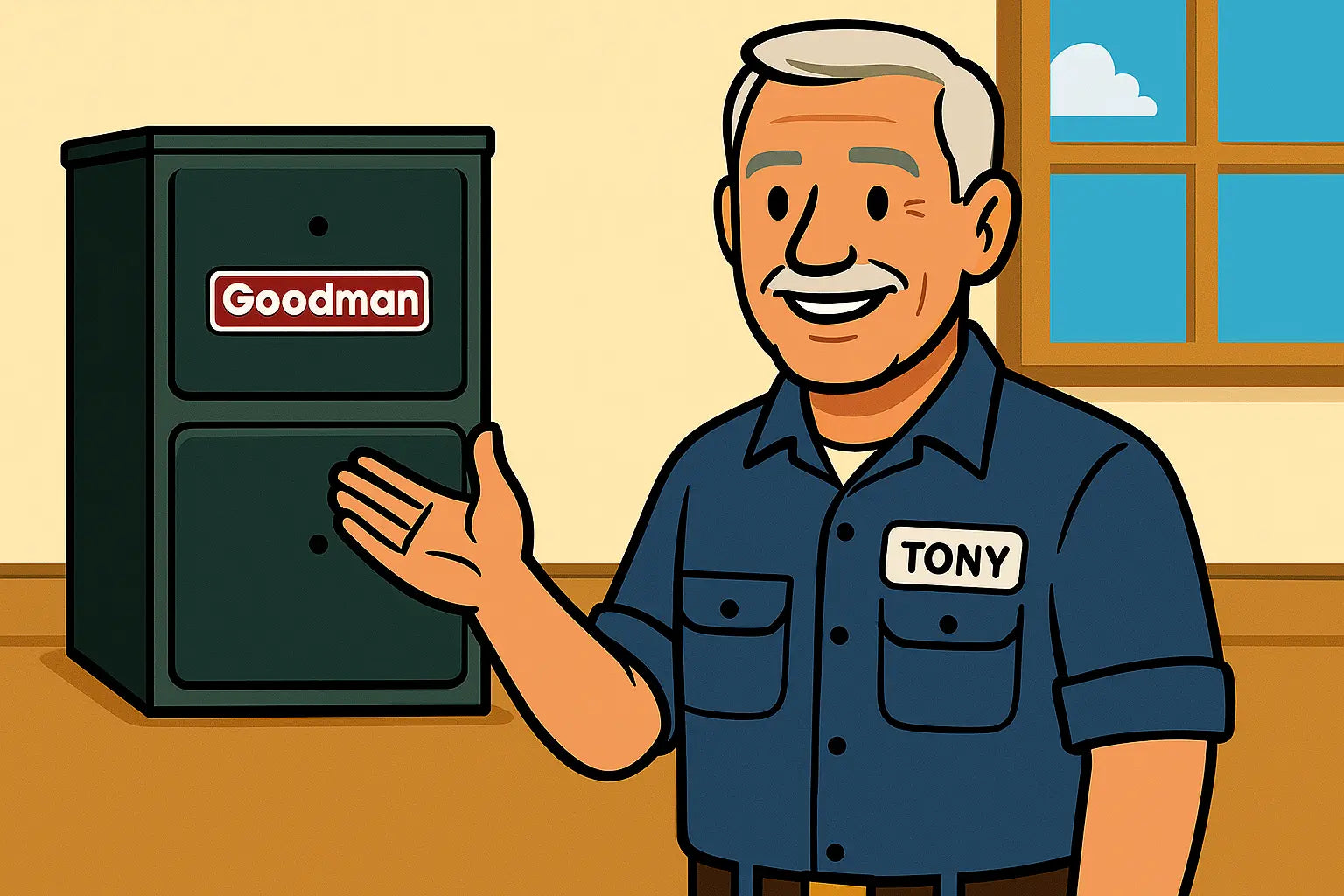Intro from Tony
Hey, hey! Tony here, your furnace guy with a knack for cutting through the nonsense. Today we’re talking about something every homeowner or DIY enthusiast stumbles on: upflow vs horizontal installation for the Goodman GR9S920603BN furnace.
This little beast packs 60,000 BTUs in a 17.5-inch cabinet, so space matters. The orientation you pick affects airflow, venting, condensate drainage, and overall efficiency. I’m going to break it all down—prep, installation, safety, and a few troubleshooting tips along the way. Stick with me, and you’ll have your furnace running like a pro.
Section 1: Why Orientation Matters
Orientation isn’t just a box placement decision—it impacts performance, longevity, and safety.
Upflow installation:
-
Air enters at the bottom and exits the top.
-
Ideal for basements or areas where ductwork is below the unit.
-
Easier to maintain for standard vertical duct runs.
Horizontal installation:
-
Air moves horizontally through the furnace.
-
Designed for tight spaces like closets, crawl spaces, or attics.
-
Requires careful condensate trap setup to prevent leaks.
According to Energy.gov, proper airflow and venting alignment are critical. Installing incorrectly can cause short-cycling, increased energy bills, and unnecessary wear.
Section 2: Preparing for Installation
Before you decide upflow or horizontal, gather the essentials:
-
Safety Gear: Gloves, goggles, CO detector.
-
Tools: Level, manometer, screwdrivers, wiring strippers, tape.
-
Manuals: Goodman installation guide (ManualsLib link).
Check clearances: Upflow units need floor clearance; horizontal needs side-wall or ceiling clearance. The Indoor Temp installation guide breaks down why spacing is critical for safety and airflow.
Inspect ductwork: Make sure supply and return ducts are compatible with the chosen orientation. Misaligned ducts can reduce efficiency by up to 15% (Energy.gov HVAC tips).
Venting prep: Confirm whether your space supports direct or non-direct venting. Horizontal orientation usually demands careful vent routing to maintain proper pressure and combustion airflow.
Section 3: Installing in Upflow Orientation
-
Position the Furnace: Level on the floor or platform. Ensure the base is solid to prevent vibrations.
-
Attach Ducts: Supply goes up; return comes from below. Seal all joints with UL-approved foil tape.
-
Gas Line Connection: Use a manometer to confirm correct pressure. Seal all joints.
-
Electrical Wiring: Connect thermostat and ground per Goodman’s schematic.
-
Startup: Confirm flame ignition, blower operation, and temperature rise.
-
Troubleshooting: Check for short cycling or improper blower speed. Most upflow issues relate to airflow restrictions or misaligned ducts.
Section 4: Installing in Horizontal Orientation
-
Position the Furnace: Place on a stable platform or suspended supports. Ensure it’s level along the airflow path.
-
Drain & Trap Setup: Proper condensate trap priming is critical to prevent water leaks.
-
Duct Attachment: Horizontal supply and return must match the cabinet exit and inlet. Seal joints carefully.
-
Gas & Electrical: Same as upflow, but pay attention to orientation-specific pressure switch alignment.
-
Startup & Testing: Flame, airflow, and static pressure checks are mandatory.
-
Common Horizontal Issues: Condensate clogs, improper trap height, or vent misalignment can cause error codes. A guide from Paso Robles Heating on venting options is a solid reference.
Section 5: Tony’s Pro Tips
-
Always check clearances for your chosen orientation.
-
Label wires during disassembly or reconnection—saves headaches.
-
Test CO levels on startup.
-
Horizontal installs need extra care with condensate traps—don’t shortcut this.
-
Upflow is generally easier for maintenance access and future servicing.
-
Keep the manual nearby—it’s your cheat sheet for venting, wiring, and startup.
Wrap Up from Tony
And there you have it—upflow or horizontal, the choice depends on your space, duct layout, and maintenance access. Do it right, and your GR9S920603BN furnace will reward you with years of consistent, efficient heat.
If you’re ready to bring one home or want the official specs for reference, check out the Goodman 92% AFUE 60,000 BTU GR9S920603BN Furnace here.
Need more advanced troubleshooting tips for this unit? Visit: The No-Nonsense Repair Guide.
Stay warm, stay safe, and let your furnace know who’s boss.
- Tony the Trusted Tech







